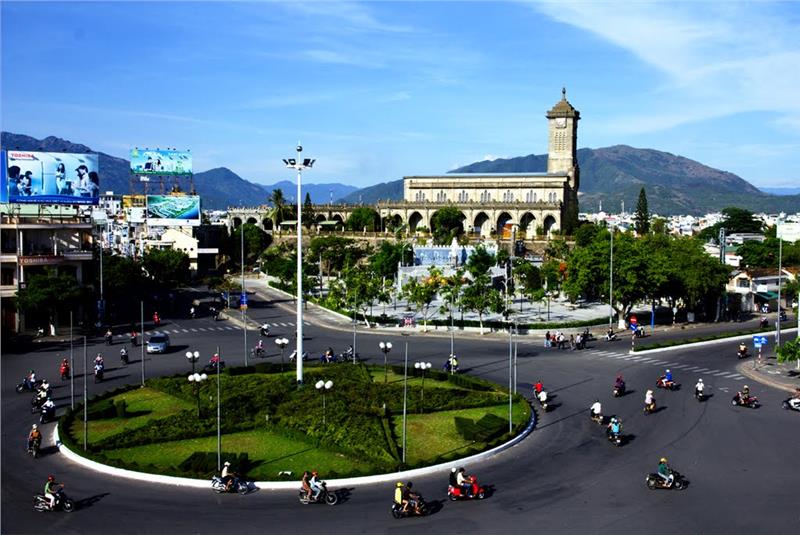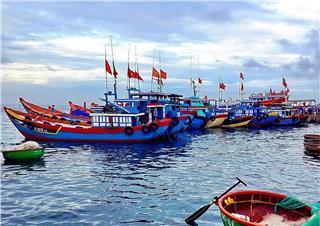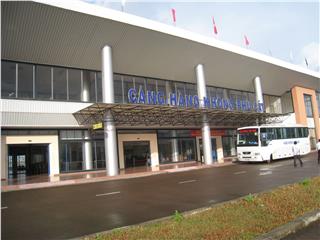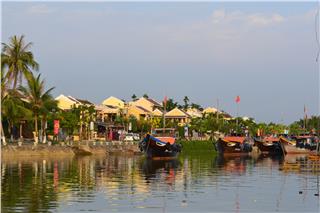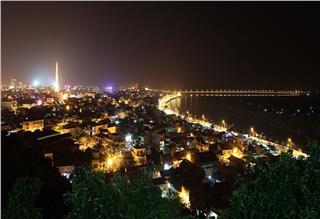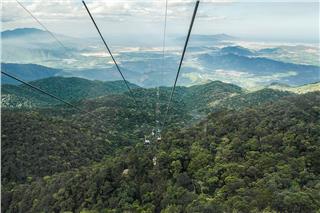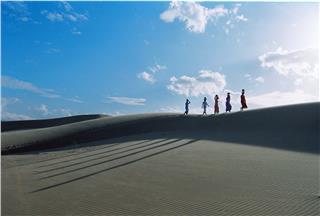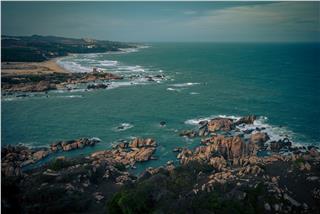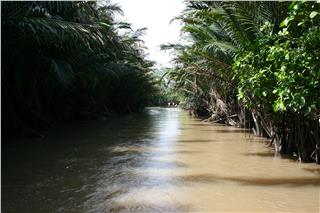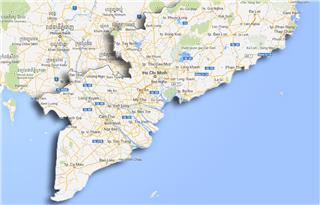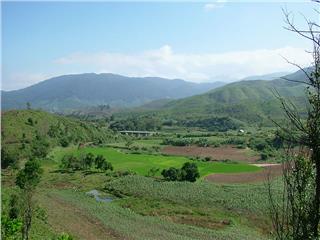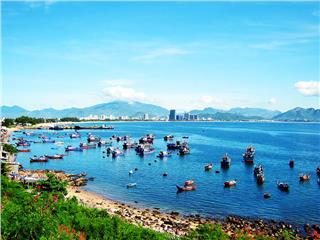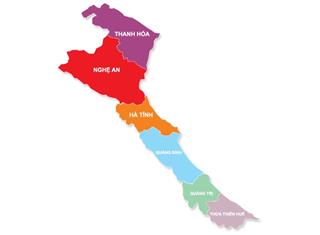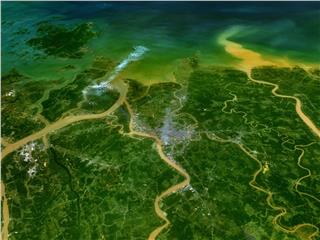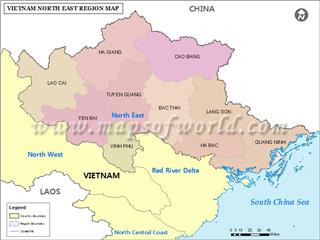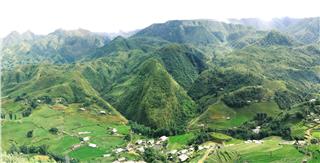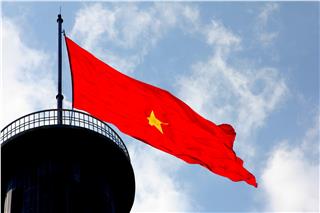Khanh Hoa is a coastal province in Vietnam South Central Coast, bordering Phu Yen to the north, Dak Lak to the northwest, Lam Dong to the southwest, Ninh Thuan to the south and the South China Sea to the east.
Khanh Hoa today is the old land of Kauthara belonging to Champa Kingdom. In 1653, Lord Nguyen Phuc Tan sent his troops to occupy Phan Rang. The Champa King, Ba Tam yielded to Nguyen's troop and ceded an area from the east of Phan Rang River to Phu Yen to Nguyen Lord. In 1831, under the reign of King Ming Mang, Khanh Hoa province was established. After the consolidation in 1975, until 1989, the National Assembly divided Phu Khanh province into 2 provinces of Phu Yen and Khanh Hoa as today.
Khanh Hoa Province consists of 2 cities and 6 districts with the total area of 5217.6 km². A part of Spratly Islands (Truong Sa District) under the management of Khanh Hoa, but it is disputed sovereign by a number of countries. Khanh Hoa has a coastline of 200 km and about 200 islands with many beautiful bays like Van Phong, Nha Trang, Cam Ranh ... with a temperate climate and many famous cultural and historical monuments. With these advantages, Khanh Hoa has become one of the large tourism centers in Vietnam. The center of Khanh Hoa provincial is located in Nha Trang, a famous tourist city. Nha Trang was home to many major events like the Sea Festival, or the major beauty contests like Miss Vietnam 2006, Miss World Vietnamese 2007 and 2010, Miss Universe 2008 and Miss Earth 2010.
Geography
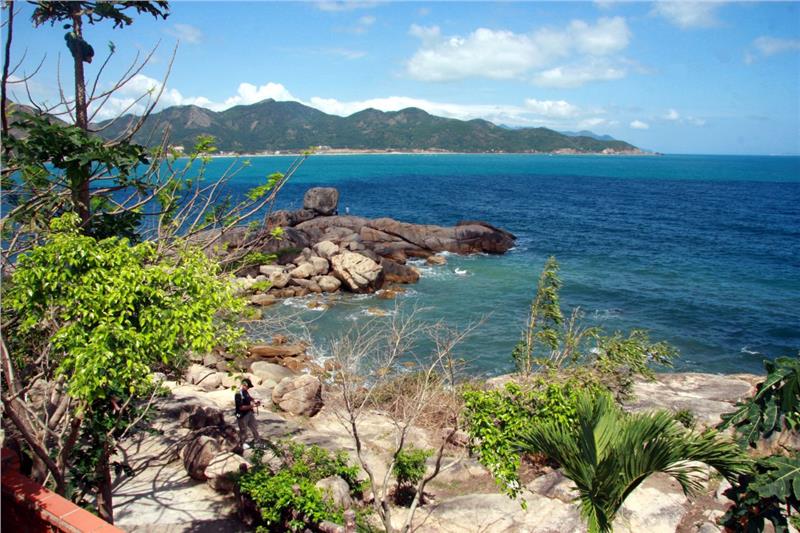
Khanh Hoa Province is located in South Central Coast, adjacent to Song Hinh, Dong Hoa and Tay Hoa districts of Phu Yen province in the north, M'Drak and Krong Bong districts of Dak Lak Province in the west, Bac Ai and Thuan Bac districts of Ninh Thuan province in the south, Lac Duong district of Lam Dong province in the southwest and the South China Sea in the south. The center of Khanh Hoa is Nha Trang City located 447km from Ho Chi Minh City and 1278km from Hanoi city. The province has the natural area of 5197 km². Its geographical coordinates are 12°52’15" to 11°42’50" north latitude and 108°40’33" to 109°29’55"east longitude. The East Pole of Khanh Hoa’s mainland is located in Mui Doi, Hon Gom peninsula, Van Ninh district and also the East Pole on the mainland of Vietnam. The length is about 150km and the width is about 90km.
As a province adjacent to The Annamite Mountains, majority terrain of Khanh Hoa is mountain and narrow delta with only 400 km², accounting for less than 1/10 of the provincial area. The plain is divided into individual plots, separated by mountains. Khanh Hoa terrain is relatively high with the average altitude of 60m above the sea level. The highest peak is Vong Phu Mountain (2051m) at the border to Dak Lak province. The delta in Khanh Hoa is small and narrow, fragmented by mountains. The large deltas in Khanh Hoa consist of Nha Trang-Dien Khanh delta located two sides of Cai River with an area of 135km², Ninh Hoa delta with the area of 100km².
Khanh Hoa Province is one of the provinces with beautiful coastline of Vietnam. The coastline stretches from Dai Lanh to Cam Ranh Bay, approximately 385 km in length. Khanh Hoa has six large lagoons and bays, which is Dai Lanh, Van Phong Bay, Hon Khoi, Nha Phu lagoon, Nha Trang Bay (Cu Huan) and Cam Ranh Bay. In addition to the stone coastal island, Khanh Hoa also has atolls in the Spratly Island. Rivers in Khanh Hoa is generally short and steep. The province has about 40 rivers with the length of 10km, forming a dense network of rivers. Khanh Hoa is situated in the tropical savanna climate. But Khanh Hoa climate has distinct characteristics. The province enjoys a mild climate with an average annual temperature of 26.7°C. There are two distinct seasons: the rainy season lasts from April to December, with the other months being the dry season, except in Nha Trang where the rainy season lasts for just two months.
History
Khanh Hoa is a land with a rich history and culture once existed a culture of Con Hamlet, dating back long before the Sa Huynh civilization. The historical cultural relics, famous scenic spots contribute to paint a tangible cultural picture on beautiful, poetic and potential land of Khanh Hoa. According to archaeological documents, since prehistoric times, humans lived in Khanh Hoa. In 1653, Lord Nguyen Phuc Tan sent his troops to occupy Phan Rang. The Champa King, Ba Tam yielded to Nguyen's troop and ceded an area from the east of Phan Rang River to Phu Yen to Nguyen Lord. The Nguyen lord accepted the ceded territory, and set up the Thai Khang garrison and divided it into two districts: Thái Khang and Diên Ninh. Since then, this land has become a part of Vietnam territory. In 1884, Nguyen Dynasty signed Patenotre Agreement with the French, creating the basis for the establishment of colonial administration in Vietnam and the weakening of the Nguyen Dynasty. In 1955, under the period of Republic of Vietnam, Khanh Hoa province was reorganized on all respects. After the reunification day, the Government merged 2 provinces of Phu Yen and Khanh Hoa into Phu Khanh province. On June 30th, 1989, the National Assembly issued the Resolution in separation of Phu Khanh province into Phu Yen province and Khanh Hoa Province.
Administration
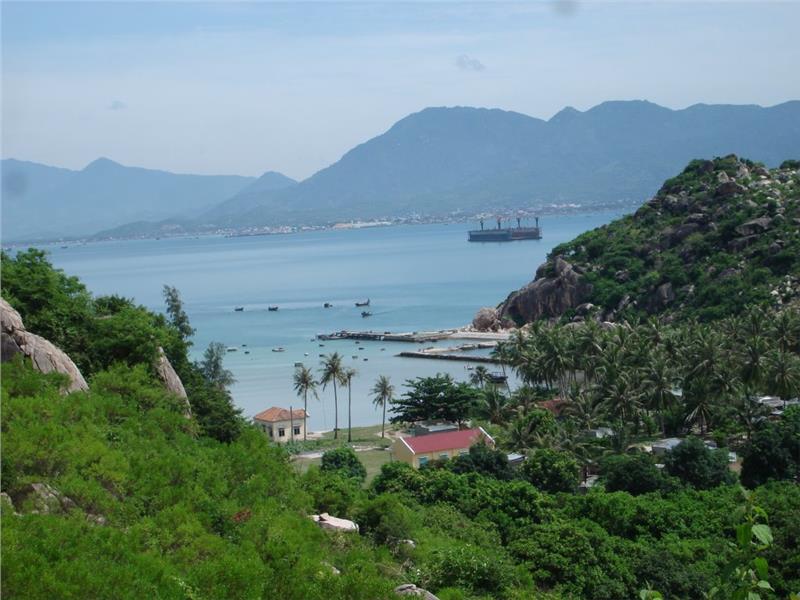
Khanh Hoa consists of 2 cities (Nha Trang and Cam Ranh), one town (Ninh Hoa) and 6 districts (Van Ninh, Dien Khanh, Khanh Vinh, Khanh Son, Cam Lam, Truong Sa). Provincial People's Council, with representatives directly elected in 5-year term, has the right to decide on long-term plans to develop economy, culture, education ... of the province. People's Council consists of 1 Chairman, 1 Vice Chairman and 1 permanent member. People's Council, under the supervision and guidance of Standing Committee of the National Assembly, under the guidance and inspection of the Government in the implementation of documents of superior State agencies as prescribed by the Council of State. Provincial People's Council elects People's Committee, which is directly responsible for the management of all activities on economy, politics, security, and culture in Khanh Hoa. Topping People's Committee are 1 Chairman and Vice-Chairmans.
Population
According to the population density on April 1st, 2011, Khanh Hoa population is 1174.100 people with the population density of 225 people/ km². Population in Khanh Hoa current is unevenly distributed. Currently, there are 32 ethnic groups living together in Khanh Hoa, of which the majority is Kinh ethnic group with 1,095,981 people. So the official language of Khanh Hoa is Vietnamese. The largest ethnic minority is Raglai with 45.915 people living mainly in two districts of Khanh Son and Khanh Vinh, and some mountainous communes of Dien Khanh district, Cam Lam district and villages of Cam Ranh City. The remaining ethnic groups are Co-ho, Ede, Hoa, Tay, Muong, Thai, Tho, Cham, and so on. In Nha Trang city, there are also several groups of foreigners living and working regularly in recent years, some of them already have permanent residency and Vietnamese citizenship.
Economy
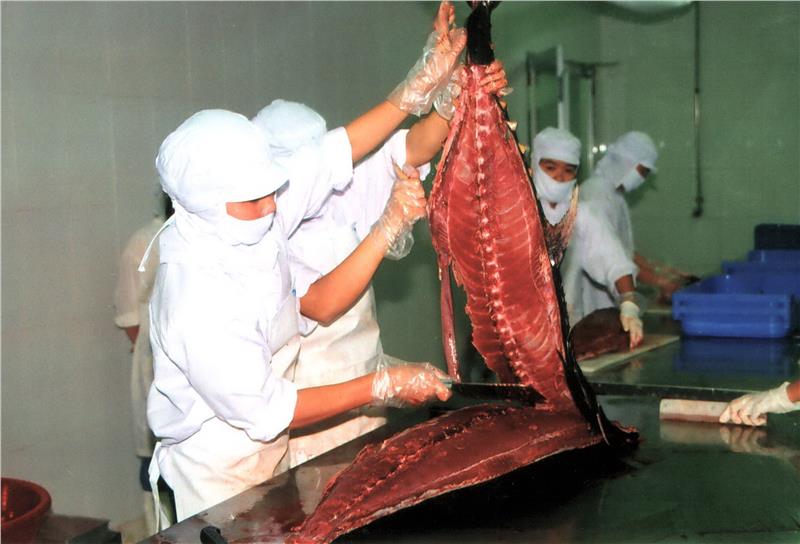
Khanh Hoa economy is one of the most developed economies in Vietnam. The growth rate (GDP) in 2014 was estimate at 8.55% compared to 2013, of which industry-construction increased by 7%, service-tourism increased by 11.51% and agriculture-forestry-fishery rose 1.73%. The index of industrial production increased by 7.22% compared to 2013. Tourism services continue to develop; the value of tourism service production was estimated at 31,790 billion dong, an increase of 15% over 2013. Commercial activities developed and reached high growth rate. Total retail sales of goods and service revenue increased by 14.9% compared to 2013. The export turnover reached 1070 million USD. Import turnover reached 654 million USD, up 31% over 2013. The value of agriculture-forestry-fishery in 2014 achieved 9789 billion dong, up 2.8% over 2013, of which agriculture increased by 2.3%, forestry decreased by 5.3% and fishery increased by 3.3%.
The state budget revenue in the province was estimated at 14,691 billion dong, equal 116.5% of the estimate in 2014. In 2014, the province granted 30 domestic investment certificates with the total registered capital of 9,010 billion dong and 9 foreign investment projects (FDI) with the registered capital of about 1,257 million USD.
Society
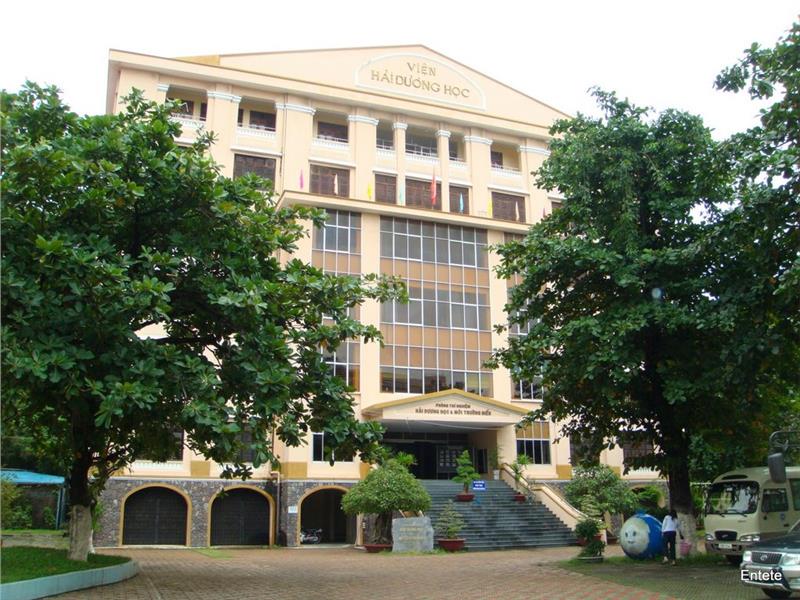
Science in Khanh Hoa has grounded from the French colonial period with the formation of two empirical scientific basis including Nha Trang Pasteur Institute in 1891 which studies in Hygiene and Epidemiology and Nha Trang Oceanographic Institute in 1922 specializing in research on marine mammals and sea. Scientific field is gradually extended to meet the needs of economic development of the province. Acitivities on culture, education, health, and sport in Khanh Hoa province are maintained and promoted. Khanh Hoa is one of the most important educational centers in Vietnam.The scale of school was enhanced while the quality of comprehensive education has positive changes. Strengthening inspection and examination of food hygiene and safety, actively promote the preventive health and prevention of infectious diseases.
Culture
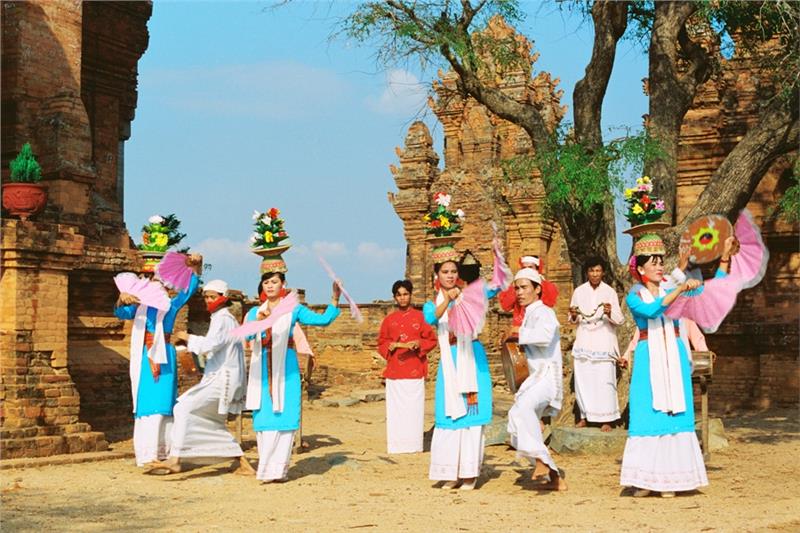
Due to the characteristics in natural geography and humanities, Khanh Hoa converges fully cultural factors of mountain, plain and island under the form of tangible and intangible culture. Over many centuries, Vietnamese people has exchanged, received and acculturated the essence of traditional culture of ethnic groups to create a unique cultural identity and enrich the cultural heritage treasure of the nation. When learning about the traditional cultural features of Khanh Hoa today, tourists will find the influence and blend the cultural nuances between Vietnamese people and Cham people, Raglai people and Hoa people, in which Vietnamese culture is the subject. Due to the conditions and environment, along with forms of economy, long-standing traditional crafts, Vietnamese people in Khanh Hoa have a unique village culture in the overall Vietnamese village culture. Moreover, fishermen not only reserve and preserve cultural tradition in the island and sea with festivals worshiping Ca Ong (Whale), Ba Trao singing in the harmonious combination with cult of Po Nagar - Thien Yana. All factors above have contributed to the uniqueness of Khanh Hoa culture.
Tourism
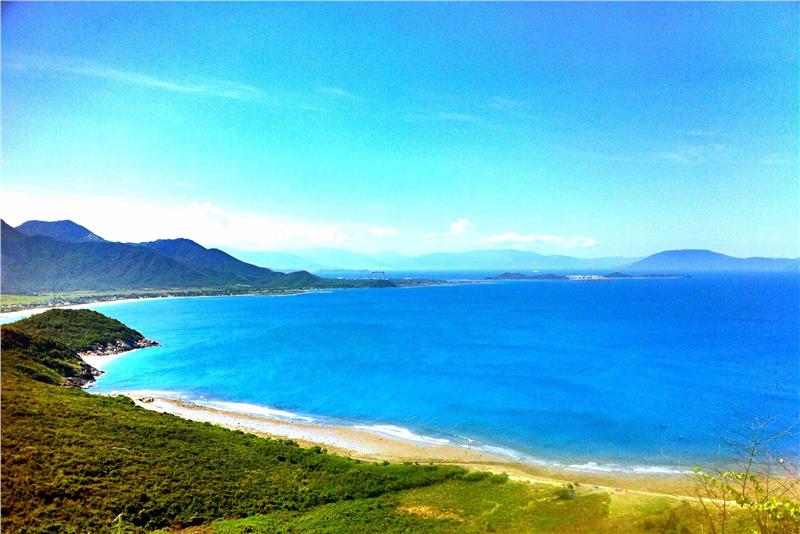
Khanh Hoa has 200km long coastline and nearly 200 small and large islands with many beautiful bays as Van Phong, Nha Trang (one of the 29 most beautiful bays in the world), Cam Ranh, etc and lots of cultural historical relics and famous scenic spots as Po Nagar tower, Dien Khanh ancient citadel, relics of scientist Yersin. With these advantages, Khanh Hoa tourism is more and more attracting tourists to Vietnam. Nha Trang Bay with the area of 507km² consists of 19 small and large islands, among them, Hon Tre is the largest island with 3250ha area and Hon Noc is the smallest island with the area of about 4ha. In terms of ecology, Nha Trang Bay is one of the rare natural models in the system of bay and lagoon in the world, because it has the most typical and rare ecosystems of the tropical sea. It is the wetland ecosystems, coral reefs, mangroves, seagrass beds, estuaries ecosystems, marine island ecosystems, ecosystems of coastal sands. Especially, Hon Mun Island Nha Trang Bay retains the highest biological diversity with 350 species of reef corals accounting for 40% of the world.
Vinpearl Land Located in the beautiful island of Hon Tre, Vinpearl Land is known as the "tropical paradise" that can appeal any tourists coming here. It has become a tourist attraction for many domestic and international tourists with leading 5-star resorts of the region, the beautiful gardens as a green oasis as well as the Amusement Park, Shopping Street... Van Phong Beach is truly a natural wonder with the temperate climate, stunning beach, smooth sand surrounded by majestic mountains and pristine tropical forests, colorful coral reefs, mangroves, hundreds of species, animals and seafood. Dam Market is the center market of Nhat Trang coastal city, a beautiful and unique architectural work. It is the biggest market as well as the commercial symbol of this coastal city. Dam Market is both a commercial shopping center and fascinating tourist attractions in Nha Trang. Nha Trang Oceanographic Institute is an institute researching in the life of marine flora and fauna. The Oceanographic Institute was established in 1922 by the French and is considered one of the earliest research institutions in Vietnam and the home to the largest collection of artifacts of the marine life in South East Asia. Currently, it is not only an Oceanographic Institute but also an attractive place for those who love sea creatures.
Festival
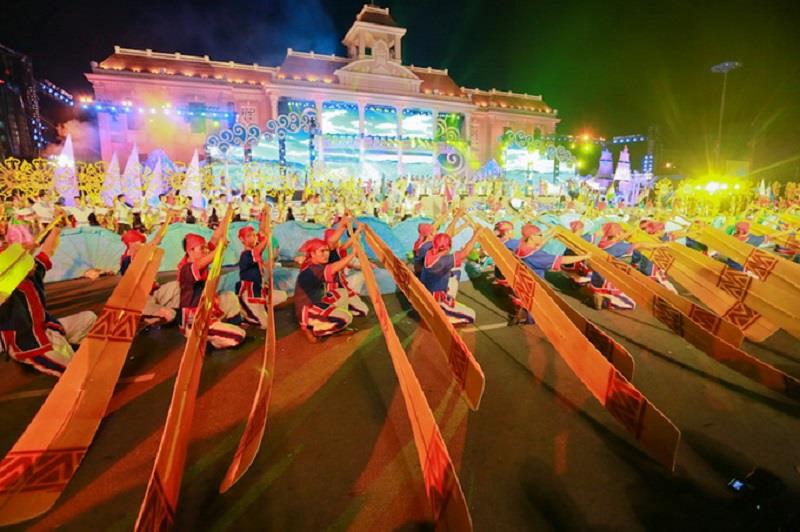
Currently, Khanh Hoa province preserves many festivals with the indigenous culture and worship in folk beliefs. Khanh Hoa festivals come from labor, customs and habits, are the spiritual cultural activities of local people. According to the local authorities, Khanh Hoa has 494 festivals of Kinh people including 237 village festivals, 121 temple festivals and 136 pagoda festivals. In addition, there are traditional festivals of ethnic minorities. Thap Ba (Ponagar) festival is annually held from 20th to 23th day of the third lunar month in Po Nagar Tower - Nha Trang City to commemorate the Mother of the land (Po Ino Nogar). This is the largest cultural festival of Vietnamese people and Cham people in Khanh Hoa and in the South Central Vietnam. In 2001, the festival was listed one of 16 national festivals. Nha Trang Sea Festival takes place every two years for a week in around June in Nha Trang City, Khanh Hoa Province. The festival is organized to promote the beauty of Nha Trang, recommend to friends all over the world about the tropical paradise. The first Nha Trang Sea Festival was held in 2003 when Nha Trang Beach was proclaimed as a member of the most beautiful bays in the world club. Nha Trang Sea Festival will definitely give you an unforgettable impression about Vietnam’s charming beauty as well as time-honored traditional values. Village festival is an occasion for people in the village to commemorate ancestors.
